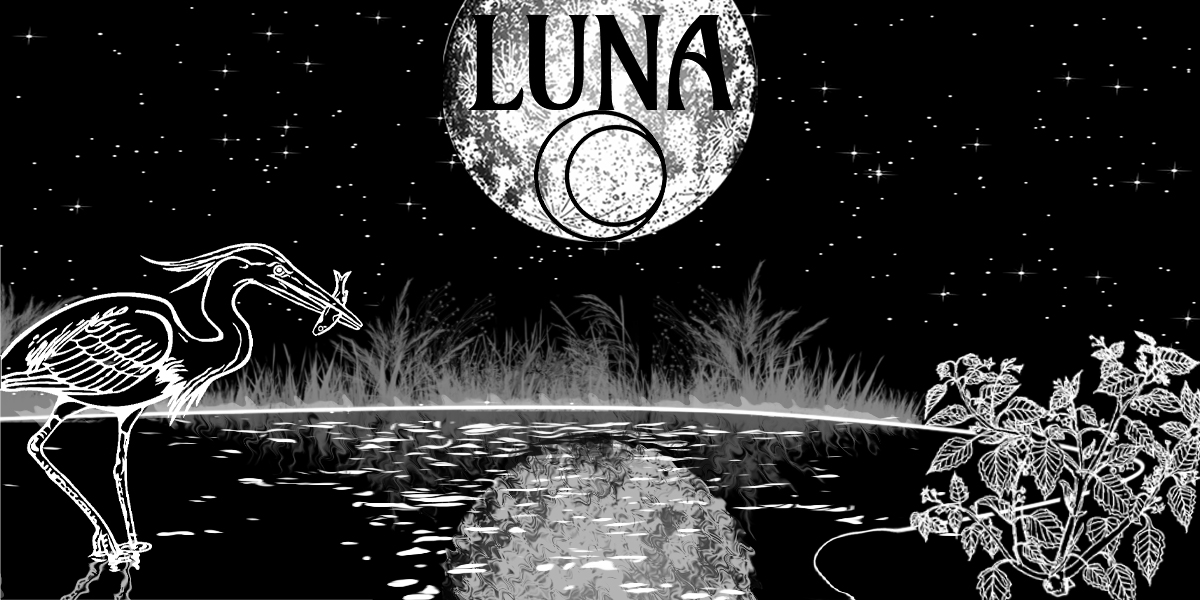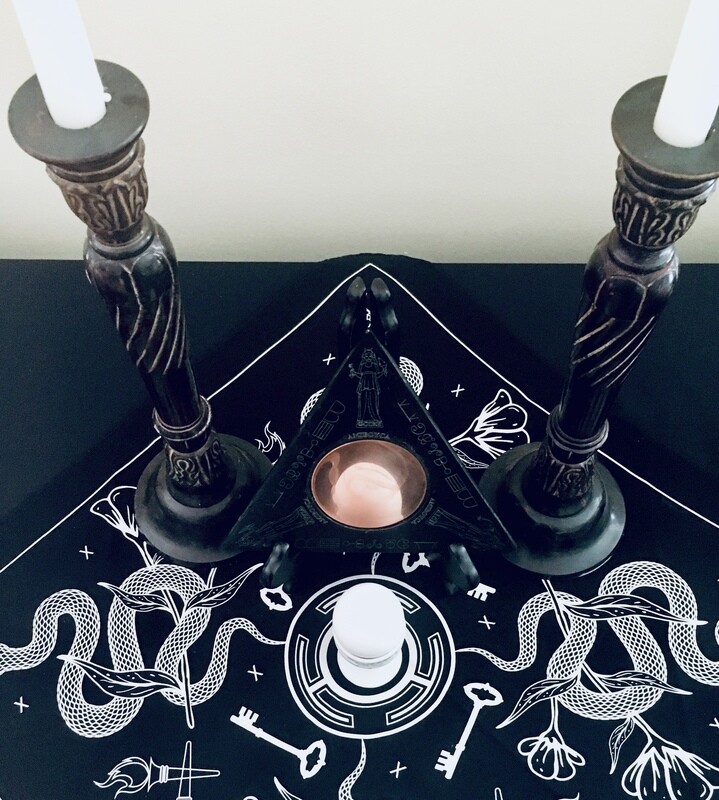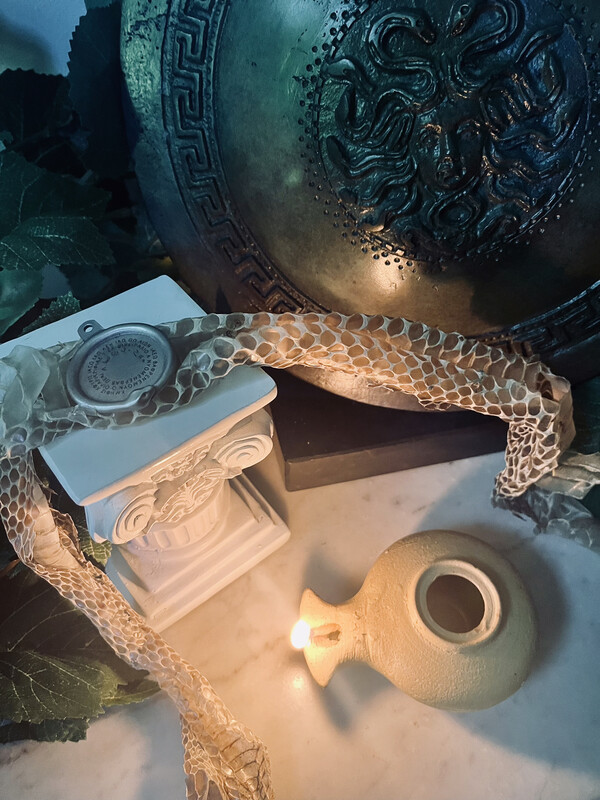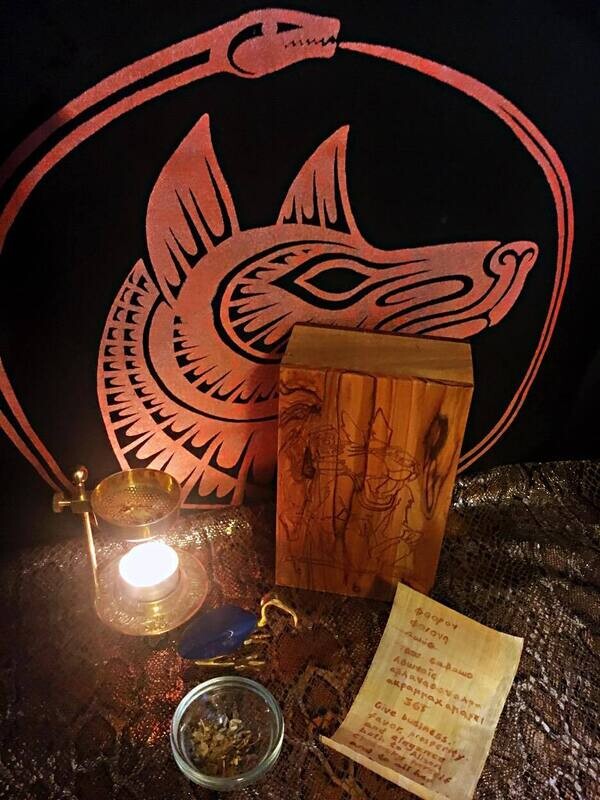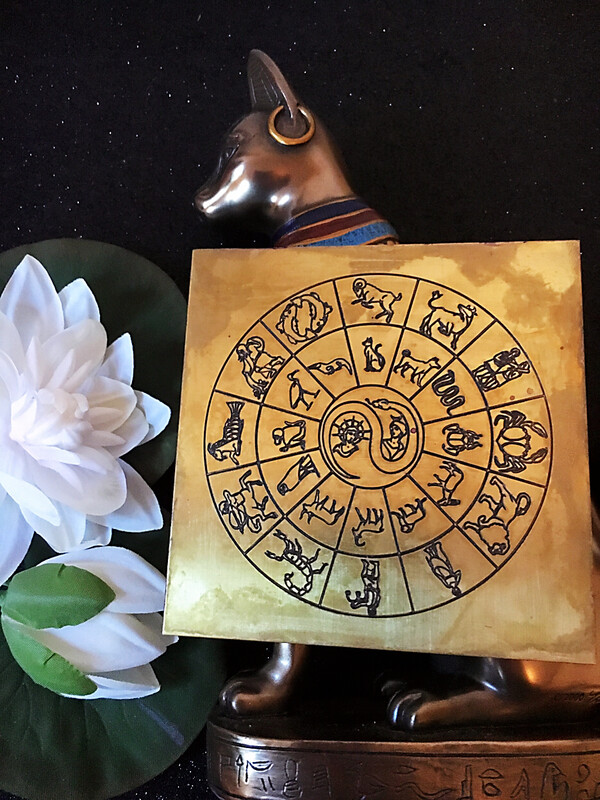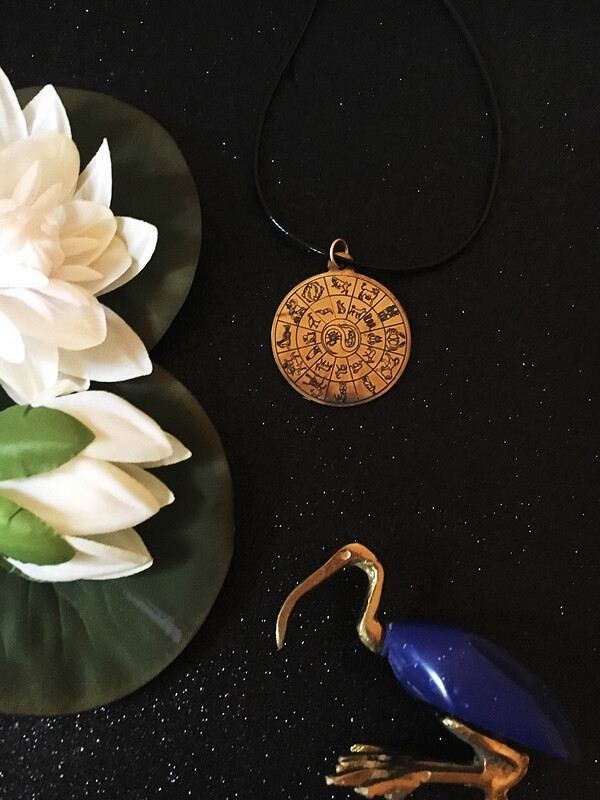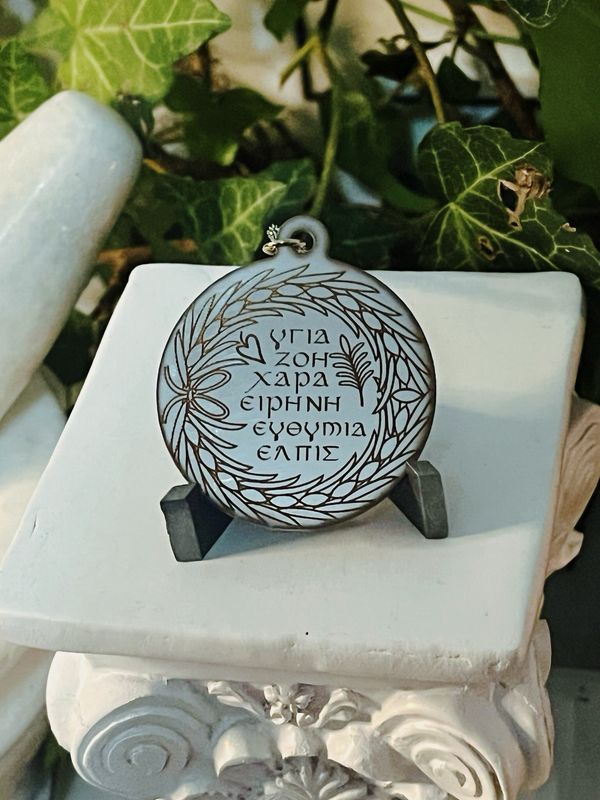From the Key of Solomon: “This and the following serve to call forth and invoke the Spirits of the Moon; and it further serveth to open doors, in whatever way they may be fastened.”
In this Practical Occult newsletter guest author Sara Mastros, author of “The Big Book of Magical Incense” and the “Orphic Hymns Grimoire”, shares her insights on the first pentacle of the moon. This essay is excerpted from her course “The Planetary Pentacles of Solomon Magician King”, which provides similar in-depth analysis for all the pentacles. You can learn more about it, and all her other classes, at www.WitchLessons.com
About the first pentacle of the moon, S. L. Mathers’ edition of the Key says “This and the following serve to call forth and invoke the Spirits of the Moon; and it further serveth to open doors, in whatever way they may be fastened.” This pentacle is unusual in several important ways. Most obviously, it is the only known Solomonic pentacle which is not in the form of a circle enclosed by a versicle. Moreover, I believe it is presented sideways in many manuscripts. Based on the orientation of the writing, I conjecture this pentacle is intended to face with the “towers” pointing up, as shown above. In this position, the pentacle at first resembles a door or gate with five uprights, with a large latch across them.
Although it is likely a mistranslation*, many bibles have 1 Kings 6:31 discuss the doors of Solomon’s temple having five doorposts, as the pentacle depicts when oriented according to the writing.

rotated First of the Moon 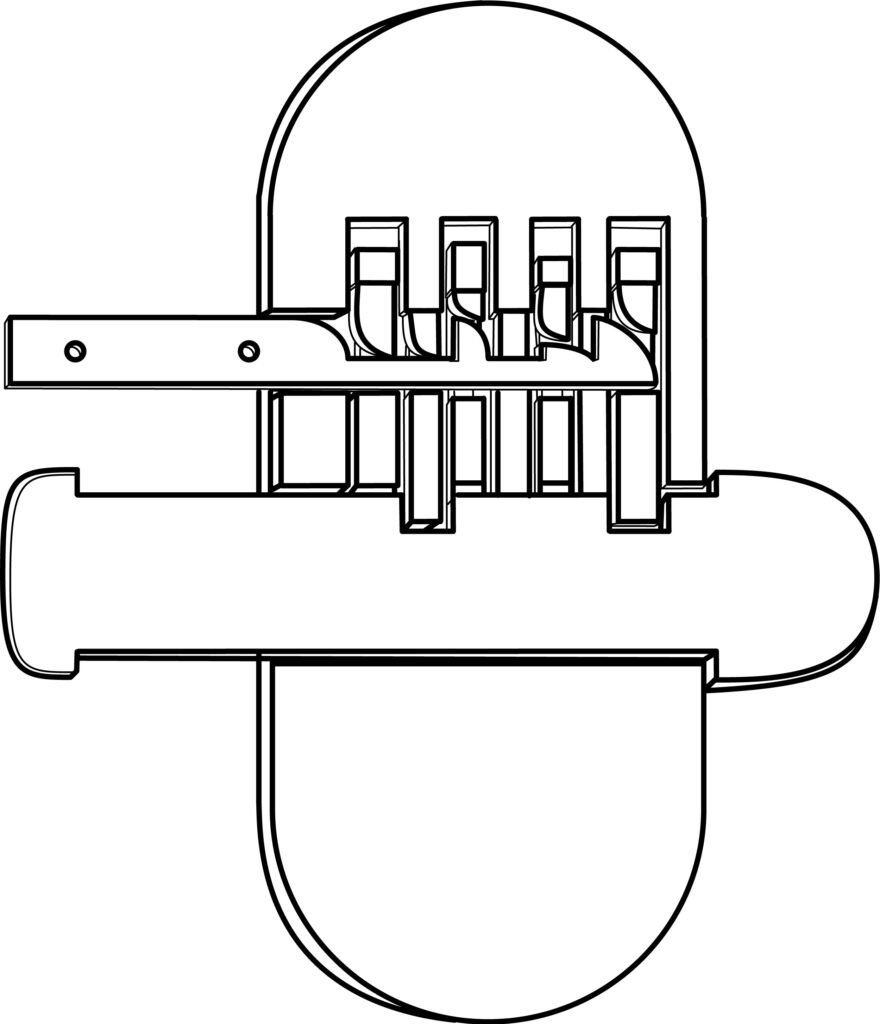
Drawing of an ancient Egyptian lock
However, in this position, it also resembles an ancient four tumbler lock. This type of lock was first used in ancient Mesopotamia, and remained the de facto standard locking mechanism throughout Europe until the 17th century. You can see how these locks work in this video: https://youtu.be/0IZc7D4D5Eg?t=15
In the text-upright position, the pentacle displays five lines of text. From top to bottom, we have:
כִּֽי־שִׁ֖בַּר דַּלְת֣וֹת נְחֹ֑שֶׁת
יהו יהוה אל יהה
יהוה
וּבְרִיחֵ֖י בַרְזֶ֣ל גִּדֵּֽעַ
שיואל ואול יאשיאל והיאל
Line three, the large central “keyhole” is the Most Holy Name, יהוה. Many Jews, including I, do not usually transliterate this name, as it is considered EXTREMELY improper to pronounce it in non-sacred contexts. However, in other contexts, this name is often written in English as “Jehovah” or “Yahweh”. The oldest surviving inscriptions of this name are from the mid 9th century BCE, but almost all scholars agree the name itself is far older, and likely Canaanite in origin. It is almost certainly related to the Hebrew root היה, which means “to be”. This reading is supported by the millenia old custom of relating the name to that spoken to Moses in Shemot (Exodus) 3:16. That name, אֶהְיֶה אֲשֶׁר אֶהְיֶה (Ehyeh Asher Ehyeh) is usually translated as “I Am That I Am”, although I prefer to translate it as “I Am Being, Becoming”. As you can probably see, אֶהְיֶה is also a form of the root היה.
Taken together, lines 1&4 are the versicle, in this case Tehillim (Psalms) 107:16, which means “For He has broken* the gates of copper, and the bars of iron He has hewn.”. This is clearly in keeping with the pentacle’s reported use in opening doors, so I don’t think it requires any additional analysis.
Line two gives four individual god names, three of which are forms of the Most Holy Name.
Reading from right to left, the first name is יהו (Yahu) a form of the Most Holy Name which is normally used as a theophoric suffix, such as in names like אֵלִיָּהוּ (Eliahu), usually rendered in English as Elijah. Next, the second name is exactly the Most Holy Name we discussed above. The third name is אל (El), which is both the proper name of a specific Canaanite god and the generic word for any god, and is closely related, linguistically, to ٱللَّٰه (Allah). The final name is יהה (Jah) may be the oldest form of the Most Holy Name. It is familiar from the word “hallelujah”, which means “hail Jah”.
The final line of text lists the names of four angels, which are, as far as I know, known only from this pentacle. Reading from right to left, the first name is שיואל or Shioel. To me, this appears to be a variation of שׁיוּל (Sheol) which is an early Aramaic name for the Underworld, or perhaps for a god of the Underworld*. This name is very old and has many Semitic cognates.
The next name, ואול (Vavel or Vauel). It is unusual for angelic names to end ול, so I think it is entirely possible that ואול is a scribal transposition error, and this name should be read as וואל, which would be pronounced similarly. With this assumption, the clearly derives from וו or simply the letter ו, both of which mean “hook” or “latch”, which is clearly related to the proposed function of the talisman.
The third name, Iashel, יאשאל may be derived from יאשׁ which means “to cause to despair”. However, the root of that word means “to push down on”, which I think makes more sense in this case. Finally, we have והיאל (Vehiel) perhaps from והיו (Vehiu), which means “and they will have been*” If not, it is almost certainly derived from some other form of הָיָה, the “to be” word we discussed above.
If you accept my conjectures above, the line indicates that the four angels in question will be pushed down in order to open the latch of the Underworld. Thus, the function of this pentacle is not just to open doors, but to call forth lunar spirits. In fact, most likely, its primary function is to call forth lunar spirits, and its efficacy in opening doors is simply a side benefit. Given the context of the other lunar pentacles, we can assume that spirits of the dead, the water, and the weather are all among those lunar spirits. Despite some manuscripts presenting the Saturn pentacles first, it probably makes more sense to think of the Lunar pentacles, those closest to Earth, as the first set. This means that this pentacle is the first pentacle, which unlocks the gates of understanding for the other pentacles.
Notes:
* It actually describes doors with five interlocking recessed frames. See https://www.baslibrary.org/biblical-archaeology-review/41/4/2
* Although שִׁ֭בַּר is generally translated as “has broken” it could also mean “has separated” which, in the context of a door, means something else entirely.
* The conflation of Underworld gods and names for the Underworld is common. For example Hades, in Greek, is both a place and a god. Similarly, our English word Hell directly relates to the Norse Underworld goddess Hel.
* Verb tenses in Hebrew are not exactly analogous to English ones.
Sara L. Mastros is the author of The Big Book of Magical Incense, Orphic Hymns Grimoire, and The Sorcery of Solomon: A Guide to the 44 Planetary Pentacles of the Magician King. Recognized by her peers as a brilliant and original thinker, an engaging and inspiring teacher, a compelling and clever writer, and a generally decent human being, Sara spends a lot of time dreaming, thinking, enchanting, writing, and teaching about witchcraft, magic, and myth. But, her true passion is raising up an army of inspired, educated, empowered witches prepared to weave weird new ways of Being in a world that desperately needs us. You can find all her stuff, including links to socials, at www.WitchLessons.com
Lunar Dream Pillow with miniature First of the Moon launches today!
International shipping available.
This post was originally a Practical Occult newsletter dated January 24th, 2022 and written by guest author Sara Mastros.
